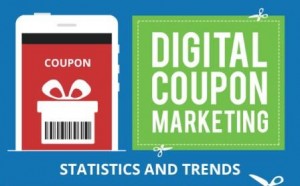Columnist Michael Della Penna walks you through the various methodologies used to understand the impact of impressions on in-store visits and how they affect campaigns.

Connecting advertising to outcomes has increasingly become a key initiative for companies of all sizes. Over 50 percent of companies with 100+ employees and more than one digital channel are using multichannel attribution models, up from 22.9 percent in 2014, according to eMarketer. Keep in mind that this figure only includes multichannel attribution for digital initiatives.
Marketers are also turning to mobile and location data to help bridge the online and offline gap and to provide a fuller picture of attribution and a consumer’s behavior after exposure to an offline ad.
Technology that measures impression-to-store-visit data at scale has garnered more interest among marketers over the past year. This tech gives marketers the opportunity not only to understand uplift resulting from an ad exposure, but the customer journey, competitive behavior and more. (Full disclosure: My employer is a provider of an online-to-in-store attribution solution.)
How does it work? There are different approaches, with varying effects on campaigns.
Location methodology
First, it’s important to understand how location data is collected. There are four main ways: bid stream, panel, SDK and beacon-based.
Bid stream solutions take a user’s latitude and longitude off an ad he has opened. Panel providers gather a subset of users and project or model the data to the larger population. SDK (software development kit) providers gather location signals from GPS, WiFi and Bluetooth within an app. And beacon providers require users to have Bluetooth on and read the signal when in proximity to a beacon.
Precision/accuracy
If you’re looking at location to determine attribution, both precision and accuracy are paramount to validate an actual visit. Precision means how exact the location is on the map and tied to a point of interest such as a retail store. It’s the difference between placing an individual at 55 Grand Street vs. somewhere on Grand Street or lower Manhattan. Precision is expressed using lat/long coordinates — the more decimal places you have, the more precise your location is.
Accuracy is how close the location provided is to the actual location. If a user is placed at 55 Grand Street, for instance, that is being really precise, but the accuracy may not be right because the user might actually be at 125 Houston Street — a few blocks away.
Evaluating the number of decimal places (Android & iOS) is key to ensuring optimal accuracy. Independent third-party testing can help, too. For example, a recent report by the Mobile Marketing Association found less than a third of location bid stream data has an accuracy within 50 to 100 meters.
Persistency vs. point in time
If you’re interested in potentially understanding more about a user’s behavior after an impression, it’s critical to understand the location persistency. Bid stream players collect data after an ad open, which may provide roughly 10 to 15 data points per ID. Conversely, SDK providers typically track the user persistently, collecting upward of hundreds of data points per user per day, which allows a brand or ad agency to see visits prior, during and after.
If you seek a deeper understanding around the user’s behaviors or a visit, it’s best to have more data collected per ID. But not all SDK location data is the same. It’s also important to understand if the location data is collected in the background, which is typically seen as the best, allowing for tracking to occur even if the app is not opened or foreground.
Scale & transparency
Obviously, the larger the location data source, the better. While density plays a critical part, scale also matters, particularly when making big decisions based on your attribution reporting.
Panel-based solutions attempt to model the data to the population at large, but they are often tied to one particular audience. For example, the panel can have app bias (i.e., catering to millennials) or can be paid or incentivized for behavior.
Dwell time
How do you know a visit is an actual visit and not someone just walking past a location? Minimum dwell time is often used to answer this question.
For example, a moviegoer is someone who has a minimum dwell time of 90 minutes at a movie theater. If that minimum isn’t set, you may be identifying someone who is picking up his or her child at the movies as a moviegoer.
It’s important to note that one limitation of bid stream providers is that dwell time is not available.
Agnostic/independent validation
A serious topic of conversation in the industry is independence. This includes the majors like Facebook that have a stake in both the media buy and the attribution reporting.
For this reason, it’s important to know if your attribution analysis is powered by the same provider who is selling you the media.
Flexibility/targeting ability
Turning insights into actionable marketing strategies and tactics is an often-overlooked component of attribution. However, technology can provide insights on the customer journey and competitive behaviors, as well as pull segments from the attribution reporting for retargeting efforts.
Privacy
Location data collection should be tied to notice, choice and access. This means that the technology has a privacy policy, is an active member of the various leading industry associations and has been audited by the Network Advertising Initiative.
Bid stream providers have come under fire recently due to privacy concerns and the inability for the user to opt out. Additionally, these privacy concerns are promoting many exchanges and SSPs (supply-side platforms) to truncate the number of decimals, providing less precision to the user’s actual location.
Attribution is a hot topic for sure, and there is little doubt that marketers will continue to focus on it. In fact, a 2016 IAB/Winterberry study reported cross-channel measurement and attribution would be the No. 1 tactic occupying respondents’ time last year, a whopping 63 percent year-over-year increase from the previous year. This is because understanding consumers’ offline behavior is mission-critical for brands and agencies looking to bridge the gap between the online and offline worlds.
Some opinions expressed in this article may be those of a guest author and not necessarily Marketing Land. Staff authors are listed here.
Marketing Land – Internet Marketing News, Strategies & Tips
(57)
Report Post







